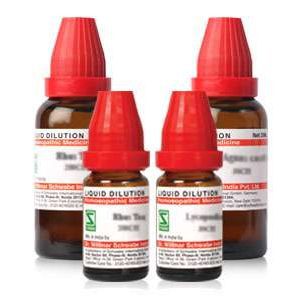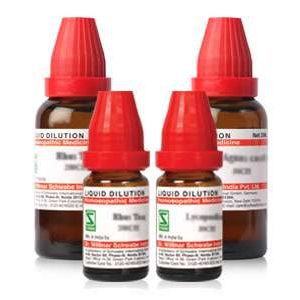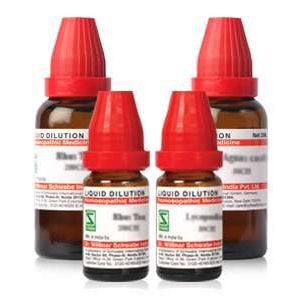
Painful Menstruation: Causes, Symptoms and Relief
- Dr. Priyanka Verma
- December 23, 2019
- No Comments

Menstruation is the cyclical shedding of the lining of the uterus is a normal phenomenon in a non-pregnant female. During this process slight pain before and during the first two or three days of menses is normal. But when the intensity increases to the extent that it hinders your daily routine activities like skipping school or office then it is termed as painful menstruation.
In medical terminology, painful menstruation is termed dysmenorrhea. In some people, it can occur without any specific cause since the beginning of menstruation, which is termed primary dysmenorrhea. While in others when it occurs with some underlying specific cause, it is termed as secondary dysmenorrhea.
Causes of Dysmenorrhea
The reason for the pain during menses is the production of a group of chemicals from the uterus which is known as prostaglandins. This leads to the contraction of the uterine muscles which further leads to pain. Females whose prostaglandin levels are higher may experience more intense contractions of their uterine muscles and hence more pain. These may also lead to vomiting, diarrhea or headaches which are sometimes present with painful menses.
There may not be any specific identifiable cause for painful menstruation. There are some risk factors which lead to some women at a higher risk of getting painful menses. These are given below:
- Family history of painful menses
- Age under 20
- Smoking
- Having heavy bleeding flow during periods
- Beginning of menses at an early age
- Never had a baby
When painful menses occur due to some identifiable cause in the body (Secondary dysmenorrhea) it can be due to the following medical conditions:
- Premenstrual syndrome: a group of symptoms like mood swings that occur 1 to 2 weeks before menses which comes due to hormonal changes in the body.
- Endometriosis: a painful medical condition in which cells from the lining of the uterus grow in parts other than the uterus
- Uterine fibroid: benign tumor of the uterus causing abnormal painful menses.
- Pelvic inflammatory disease: infection of pelvic organs like the uterus, fallopian tubes, or ovaries leading to pain and inflammation.
- Cervical stenosis: a rare condition in which the outlet of the cervix is too small leading to diminished menstrual flow and increased pressure inside the uterus causing pain.
Also Read How Homeopathic Medicines Help to Get Relief from painful menstruation?
Symptoms
A common symptom of dysmenorrhea is cramping pain before and first 2 or 3 days of menses. The pain sensation can vary from throbbing to aching or dull or sharp. Along with this other common symptoms are:
Lower back pain
- Nausea
- Vomiting
- Diarrhea
- Headache
- In some extreme cases- fainting spells
Treatment
Homoeopathy offers a great no. of medicines for the treatment and cure of both primary and secondary dysmenorrhea. The medicine is selected according to the symptom’s similarity and individualization of the patient. Given below is a list of commonly used homoeopathic medicines for painful menstruation:
Ammonium carbonicum: For cholera-like symptoms at the beginning of periods. Menses are accompanied by toothache, abdominal pain, and sadness. There is fatigue, especially of the thighs with yawning and chilliness.
Bovista: When diarrhea occurs before and during periods. Painful bearing down sensation occurs during menses. Soreness in the pubic region during menses.
Chamomilla: Labor-like pains during menses with a profuse flow of clotted and dark blood. Pains are intolerable.
Cimicifuga racemosa: Pain in the lower abdomen immediately before menses. Menstrual flow is profuse, dark and offensive with backache and nervousness. Pain across the pelvis from hip to hip with great intolerance of pain. All complaints become worse during menses.
Colocynthis: Boring pain in the ovarian region. Pain during menses must bend double accompanied by great restlessness. Wants abdomen supported by pressure. Bearing down cramps compelling the patient to bend double.
Kali carbonicum: Menstrual pain passes from the back down the hips with cutting pain in the abdomen. Pain from the left labium radiate to the chest. Uterine hemorrhage with constant spotting of blood after profuse flow which occurs with severe backache.
Magnesium phosphoricum: Acts as a near-specific homoeopathic anti-spasmodic medicine. For membranous dysmenorrhea. Pains worsen before and when menstrual flow begins. Pains are darting, like lightning, shooting. The patient feels better by heat and bending double.
Viburnum opulus: Crampy pain during menses which radiates down to the thighs. Before menses, bearing down pains in the abdomen. Aching in sacrum and pubes with pain in anterior muscles of thighs. Spasmodic and membranous dysmenorrhea. Menses are offensive in odour, scanty and last for only a few hours.
Magnesium Phosphoricum Pentarkan: The guiding principle for the composition of Magnesium Phosphoricum Pentarkan is to ensure that each individual component contributes positively to the overall effect of the combination and that the medicine was safe. The therapeutic components Magnesium phosphoricum, Chamomilla, Colocynthis, Potentilla and Aesculus hippocastanum are proven homoeopathic remedies. They complement one another when used for treating painful menstrual bleeding (dysmenorrhoea) accompanied by premenstrual symptoms such as abdominal and back pain, cramps and vegetative dysfunction.
-
 Dr Willmar Schwabe India Viburnum opulus CHSale Product on sale
Dr Willmar Schwabe India Viburnum opulus CHSale Product on sale₹105.00₹86.10 -
 Dr Willmar Schwabe India Magnesium phosphoricum CHSale Product on sale
Dr Willmar Schwabe India Magnesium phosphoricum CHSale Product on sale₹105.00₹86.10 -
 Dr Willmar Schwabe India Kali carbonicum CHSale Product on sale
Dr Willmar Schwabe India Kali carbonicum CHSale Product on sale₹105.00₹86.10 -
 Dr Willmar Schwabe India Colocynthis CHSale Product on sale
Dr Willmar Schwabe India Colocynthis CHSale Product on sale₹105.00₹86.10 -
 Dr Willmar Schwabe India Cimicifuga racemosa CHSale Product on sale
Dr Willmar Schwabe India Cimicifuga racemosa CHSale Product on sale₹105.00₹86.10Rated 5.00 out of 5 based on 1 customer rating -
 Dr Willmar Schwabe India Chamomilla CHSale Product on sale
Dr Willmar Schwabe India Chamomilla CHSale Product on sale₹105.00₹86.10Rated 5.00 out of 5 based on 1 customer rating -
 Dr Willmar Schwabe India Bovista CHSale Product on sale
Dr Willmar Schwabe India Bovista CHSale Product on sale₹105.00₹86.10 -
 Dr Willmar Schwabe India Magnesium Phosphoricum Pentarkan*Sale Product on sale
Dr Willmar Schwabe India Magnesium Phosphoricum Pentarkan*Sale Product on sale₹195.00₹159.90
Conclusion
During the process of menses slight pain before and during first two or three days of menses is normal. But when the intensity increases to the extent that it hinders your daily routine activities like skipping school then it is termed as painful menstruation or dysmenorrhea. Reason for the pain during menses is the production of prostaglandins. Based on the reason for its cause it can be primary or secondary. For both the types of dysmenorrhea, there are many homoeopathic medicines which can cure it. The commonly used homoeopathic medicines for this condition are Magnesium phosphoricum, Colocynthis, Viburnum opulus etc. These medicines are selected according to symptoms similarity an individualization of the patients by a qualified and registered homoeopathic physician.





































